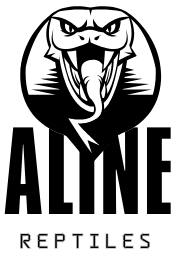Have you ever stumbled upon a turtle in the wild, or perhaps you’re a proud owner of one of these incredible creatures, only to wonder, “Is this a box turtle or a terrapin?” It’s a common question, but one that leaves many confused.
After all, they both share similar names, look alike in many ways, and both belong to the same reptile family. But here’s the thing—box turtles and terrapins are not the same, and understanding their differences is crucial for anyone who loves turtles.
In this guide, we’ll dive deep into the fascinating world of box turtles and terrapins, answering the burning question: “Is a box turtle a terrapin?” Whether you’re an aspiring turtle owner, a nature enthusiast, or simply curious about these creatures, you’re in for an eye-opening journey.
So, let’s clear up the confusion and explore what sets these two species apart, from their habitats to their behaviors and everything in between.
What is a Box Turtle?

Before we can understand the difference between box turtles and terrapins, let’s take a closer look at the box turtle.
Box turtles are a land-dwelling species, known for their remarkable ability to close their shells tightly—hence the name “box.” This feature is particularly unique and gives them an advantage in protecting themselves from predators.
Key Characteristics of Box Turtles
- Shell: The most distinctive feature of box turtles is their hinged shell. Unlike many other turtles whose shells are fixed, box turtles can close their shells completely to protect themselves. This “box” mechanism allows them to retreat into their shell when threatened.
- Size: Box turtles are generally smaller compared to terrapins. Most species range from 4 to 10 inches in length, with males being slightly smaller than females.
- Habitat: Box turtles prefer terrestrial environments, often found in forests, meadows, and grasslands. They thrive in warm, moist conditions and often hide under fallen logs or leaf litter to regulate their body temperature.
- Diet: Box turtles are omnivores, meaning they eat a variety of foods. Their diet includes fruits, vegetables, insects, small amphibians, and sometimes fungi.
- Lifespan: Box turtles are famous for their longevity. They can live anywhere from 50 to 100 years, depending on their environment and care.
Box Turtle Species
- Eastern Box Turtle: This is the most common species found in the United States, characterized by its domed, patterned shell and vibrant orange and yellow markings.
- Three-toed Box Turtle: Found primarily in the central United States, this species is known for its three toes on each back foot, compared to the typical five.
What is a Terrapin?
Now, let’s turn our attention to the terrapin. The term “terrapin” is used to describe a specific group of turtles that live in brackish waters, such as coastal marshes, estuaries, and slow-moving rivers. Terrapins are known for being semi-aquatic—spending part of their time on land and part in the water.
Key Characteristics of Terrapins
- Shell: Terrapins generally have flatter shells than box turtles, often designed for a more streamlined shape to help them swim efficiently in the water. Unlike box turtles, their shells are not hinged.
- Size: Terrapins are typically medium-sized, ranging from 5 to 10 inches in length. Some species, like the Diamondback Terrapin, can grow even larger.
- Habitat: Terrapins are semi-aquatic, meaning they live in or near water. They are typically found in coastal environments, where brackish water (a mix of fresh and saltwater) is abundant. They enjoy basking on mudflats or sandbars when not in the water.
- Diet: Terrapins are mostly carnivorous, feeding on small aquatic animals such as fish, crabs, snails, and insects. Their diet varies depending on their habitat and availability of prey.
- Lifespan: Terrapins generally live between 20 to 30 years in the wild, though some can live longer in captivity if cared for properly.
Terrapin Species
- Diamondback Terrapin: This species is one of the most well-known, primarily found along the U.S. East Coast and Gulf Coast. It is distinguished by its diamond-shaped patterns on its shell.
- Malaysian Box Turtle (often misidentified as a terrapin): Despite its name, the Malaysian Box Turtle is technically a box turtle species, but it is often mistaken for a terrapin because of its aquatic habits.
Box Turtles vs. Terrapins: Key Differences

At this point, you may already be starting to see some differences between box turtles and terrapins, but let’s dig deeper into the key characteristics that separate them.
1. Habitat
- Box Turtles: These turtles are terrestrial and are typically found in forests, meadows, and grasslands. They rarely go near water, and when they do, it’s usually just to drink or soak briefly. Box turtles prefer moist environments but are not fully aquatic.
- Terrapins: Terrapins, on the other hand, are semi-aquatic and live in brackish water. They thrive in environments where fresh and saltwater mix, like marshes, estuaries, and tidal flats. They spend much of their time in the water, but they also need to bask in the sun.
2. Diet
- Box Turtles: Box turtles are omnivores, and their diet includes a variety of plant matter like fruits, vegetables, and mushrooms, as well as insects, snails, and small amphibians. They are opportunistic eaters and adapt to the food sources in their environment.
- Terrapins: Terrapins are mainly carnivorous, feeding on aquatic animals like crabs, fish, snails, and even small mollusks. Their diet is more specialized to their aquatic environment.
3. Shell Shape
- Box Turtles: The domed, hinged shell of the box turtle is its defining feature. This allows it to close itself off completely from potential predators, providing protection from attacks.
- Terrapins: Terrapins have flattened, streamlined shells, designed for efficient swimming. Their shells are not hinged, and they are better adapted for life in the water.
4. Behavior
- Box Turtles: Box turtles are known for being more solitary and territorial. They are not social creatures and typically stay within a limited home range. They are also slow movers, preferring to stay in familiar areas where they can find food and shelter.
- Terrapins: Terrapins are somewhat more social and tend to congregate in the same areas, particularly during the warmer months. They enjoy basking together in the sun on rocks, logs, or mudflats. They are more active swimmers and will travel longer distances in search of food or mates.
5. Lifespan
- Box Turtles: Box turtles are famous for their longevity. In the wild, they can live anywhere from 50 to 100 years. Their slow metabolism and limited predators contribute to their long life.
- Terrapins: While not as long-lived as box turtles, terrapins can still live for 20 to 30 years, especially in protected environments like aquariums or wildlife reserves.
Why the Confusion? Are They Really the Same?
So, if box turtles and terrapins are clearly different, why do so many people confuse them?
Common Misconceptions
The confusion likely arises from the use of the word “turtle” in both cases, as well as the shared resemblance between the two. Both box turtles and terrapins have a similar body structure, with four legs, a hard shell, and a relatively small size.
The use of the term “terrapin” itself is also a regional issue: in some areas, people may use “terrapin” to refer to any small turtle, while in other areas, it’s reserved for semi-aquatic species like the diamondback terrapin.
Etymology and Classification
The term “terrapin” comes from the Algonquin language, meaning “little turtle.” In the scientific community, terrapins are classified as members of the Emydidae family, which is distinct from the family that box turtles belong to.
Conclusion
Is a Box Turtle a Terrapin? No, a box turtle is not a terrapin. While these two species share the same broad turtle family and exhibit some similarities, their differences are clear. Box turtles are land-dwelling, omnivorous creatures with a unique hinged shell, while terrapins are semi-aquatic, carnivorous turtles with a streamlined shell built for swimming.

